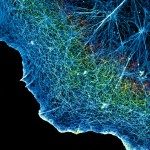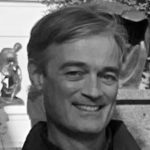Link to Pubmed [PMID] – 23974728
Nucleus 2013 Sep-Oct;4(5):361-6
Biological functions including gene expression and DNA repair are affected by the 3D architecture of the genome, but the underlying mechanisms are still unknown. Notably, it remains unclear to what extent nuclear architecture is driven by generic physical properties of polymers or by specific factors such as proteins binding particular DNA sequences. The budding yeast nucleus has been intensely studied by imaging and biochemical techniques, resulting in a large quantitative data set on locus positions and DNA contact frequencies. We recently described a quantitative model of the interphase yeast nucleus in which chromosomes are represented as passively moving polymer chains. This model ignores the DNA sequence information except for specific constraints at the centromeres, telomeres, and the ribosomal DNA (rDNA). Despite its simplicity, the model accounts for a large majority of experimental data, including absolute and relative locus positions and contact frequency patterns at chromosomal and subchromosomal scales. Here, we also illustrate the model’s ability to reproduce observed features of chromatin movements. Our results strongly suggest that the dynamic large-scale architecture of the yeast nucleus is dominated by statistical properties of randomly moving polymers with a few sequence-specific constraints, rather than by a large number of DNA-specific factors or epigenetic modifications. In addition, we show that our model accounts for recently measured variations in homologous recombination efficiency, illustrating its potential for quantitatively understanding functional consequences of nuclear architecture.

